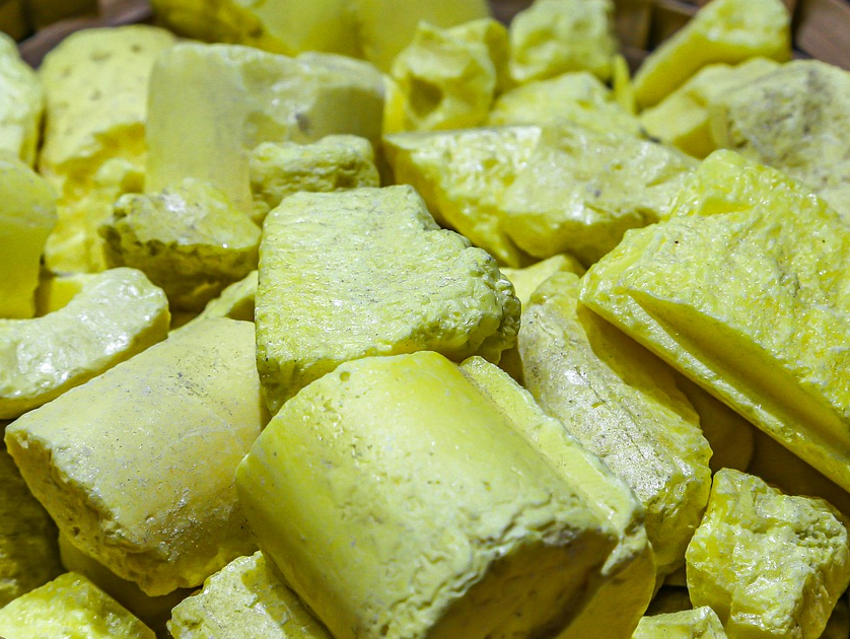Sulfur is a mostly unwanted by-product of the petrochemicals industry, which has resulted in huge stockpiles of sulfur that are not being used for anything. Materials scientists have become interested in turning this waste sulfur into useful polymers. One approach for this is inverse vulcanization, in which sulfur-based polymers are crosslinked using small organic molecules—the opposite of the well-known vulcanization of, e.g., rubber for use in tires, where sulfur is used as a crosslinker for organic polymers.
Many plastics and polymers are not recyclable or are difficult to recycle. However, polymers made with a high component of sulfur have many bonds that can easily break and reform. This makes it easy to make an object out of a sulfur polymer and then later reform it into another shape. Unfortunately, so far the use of sulfur polymers has been hampered by their poor mechanical properties.
Peiyao Yan, University of Liverpool, UK, Tom Hasell, University of Liverpool and Northwest Normal University, Lanzhou, China, and colleagues have found that the mechanical strength of sulfur polymers can be improved by a two-step synthesis that introduces urethane bonds as crosslinkers. The team first prepared a chemically stable linear pre-polymer from sulfur and Span 80 (pictured below on the left), a trifunctional monomer. This pre‐polymer with hydroxyl groups on the side chains was further crosslinked by the difunctional monomer diphenylmethane 4,4’‐diisocyanate (MDI, pictured below on the right), which forms urethane bonds.

The mechanical strength of the material was significantly increased by crosslinking. The physical properties of the polymers can be tuned by changing the degree of crosslinking. Despite the additional bonds, the polymers can still be recycled easily. They also show a shape-memory effect. After being set into one shape, they can be temporarily deformed into a second shape, which they retain until heating returns them to the first shape. Shape memory materials have potential applications in areas such as soft robotics, medicine, and self-repairing objects. Additionally, the team found that by heating the polymer to a higher temperature at which the sulfur bonds rearrange, it was possible to set a new “remembered” shape—in essence, “re-programming” the polymer’s shape memory. This process can be repeated multiple times.
- Inverse vulcanized polymers with shape memory, enhanced mechanical properties, and vitrimer behavior,
Tom Hasell, Peiyao Yan, Wei Zhao, Bowen Zhang, Liang Jiang, Samuel Petcher, Jessica A. Smith, Douglas J. Parker, Andrew I. Cooper, Jingxin Lei,
Angew. Chem. Int. Ed. 2020.
https://doi.org/10.1002/anie.202004311



